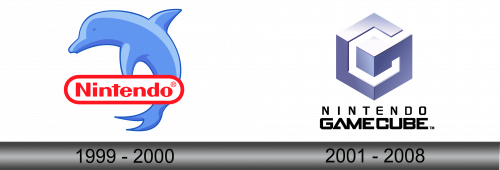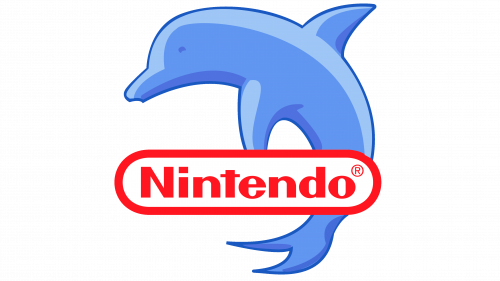Nintendo GameCube Logo
The Nintendo GameCube, introduced in 2001, is a sixth-generation gaming console, succeeding the N64. Distinctive for its cube shape and compact design, it utilized miniDVDs for games. Praised for its exclusive titles like “The Legend of Zelda: The Wind Waker” and “Super Smash Bros. Melee,” it stood out in a competitive market. Though not Nintendo’s top seller, the GameCube garnered a loyal fanbase and is remembered for its quality gaming experiences and innovative controller design. Owned by Nintendo, it set the stage for the company’s future endeavors in the gaming sphere.
Meaning and history
Its development, codenamed “Dolphin,” underwent significant anticipation. Its name referenced the console’s initial graphics chip. Interestingly, before its official release, the console bore a Dolphin logo, paying homage to its codename.
The GameCube’s design was a striking departure from traditional console aesthetics. Its compact, cube-shaped form factor, complete with a handle, showcased its portability. It was released in a variety of colors, allowing personalization for users.
In terms of gaming, the console boasted several iconic titles. Games like “Metroid Prime,” “The Legend of Zelda: The Wind Waker,” and “Super Smash Bros. Melee” were not just commercial successes but became cultural phenomena. The GameCube’s controller, too, received acclaim, later influencing the design for future Nintendo consoles.
However, in the crowded console market of the early 2000s, dominated by Sony’s PlayStation 2, the GameCube faced stiff competition. Despite its innovative design and stellar game lineup, it couldn’t surpass the sales of its competitors. Yet, it established a dedicated fanbase, many of whom reminisce about the console with great fondness.
Post-GameCube, Nintendo shifted its strategy, focusing on broader demographics and innovative gameplay mechanics, leading to the groundbreaking Wii console. While the GameCube wasn’t Nintendo’s most successful venture, its legacy is evident in the company’s subsequent creations, ensuring its place in gaming history.
1999 – 2000
In a nod to its history, a complimentary Dolphin emulator tailored for the GameCube was launched. It became compatible across platforms like Windows, Linux, macOS, and even Android, serving as an homage to the earlier project bearing the same moniker. Before its official unveiling between 1999 and 2000, the GameCube was symbolized by a Dolphin in a distinctive “cornflower” hue. The shade deepened on its side, giving the impression of a shadow, while a lighter blue graced its back, reminiscent of sunlight’s touch. Just beneath the Dolphin’s form, merging slightly with its tail, one could spot the iconic red brand emblem of the company, displaying its name. This design echoed the vibe of Nintendo’s preceding consoles, namely the widely-celebrated Nintendo 64 and Game Boy Color.
2001 – 2008
In 2001, Nintendo unveiled the definitive emblem for its GameCube console. This emblem, with its distinct design, became synonymous with the brand, gracing advertisements and product boxes for the entirety of its lifecycle. The symbol not only represented the technology behind the console but also evoked a sense of nostalgia and innovation for gamers worldwide. Every time enthusiasts saw this logo, it reminded them of the hours spent on immersive gaming experiences. It stood as a testament to Nintendo’s dedication to innovation and their commitment to delivering top-notch entertainment. Through packaging and promotional materials, this design played a crucial role in solidifying the GameCube’s place in gaming history.













